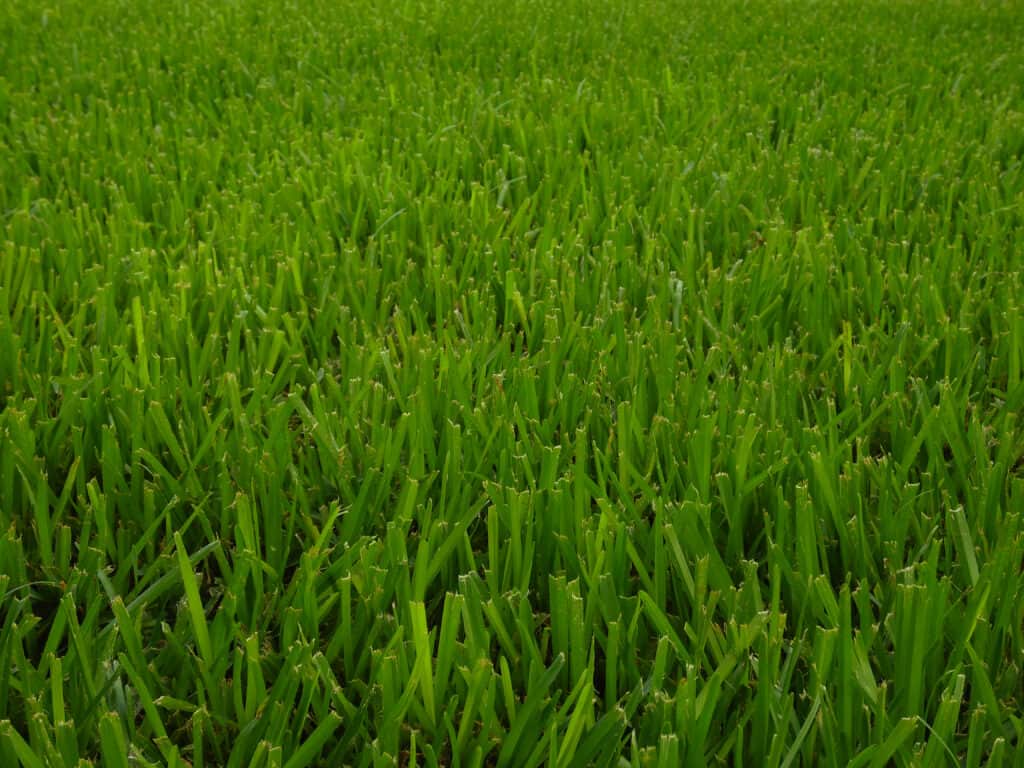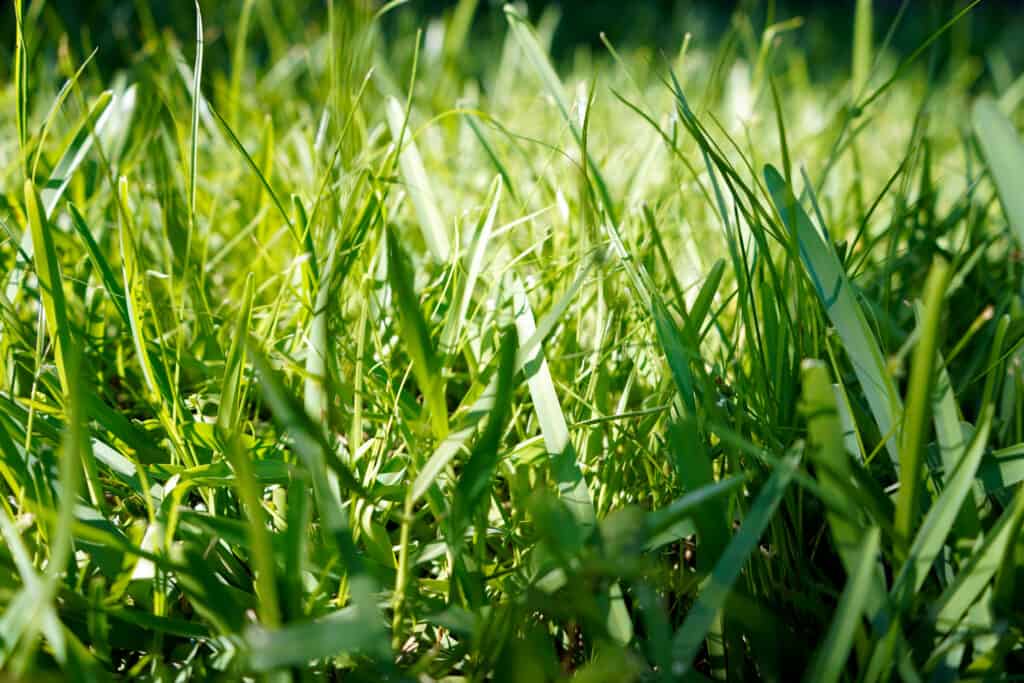Have you been thinking about revamping your lawn? If so, St. Augustine grass might be exactly what you’re looking for. St. Augustine is an attractive, thick, low-maintenance grass that many people have come to appreciate for a variety of reasons. Let’s discuss how to plant St. Augustine grass, investigate the necessary steps to maintain it, and explore the pros and cons of choosing this type of grass over others.
St. Augustine Grass: A Brief Introduction

The scientific name of St. Augustine grass is
Stenotaphrum secundatum.
©NOPPHARAT539/Shutterstock.com
While you were shopping around and exploring different types of grasses you can plant on your lawn, you may have run into St. Augustine grass along the way. This is one of the most popular varieties, and homeowners love it for its hardiness, appearance, and low mowing needs. After it is established, it gives lawns a smooth, uniform look that many people just can’t get enough of. Although setting it up is a little more labor-intensive than other grasses, even inexperienced individuals will find that this process is less intimidating than it seems. There are several different types of St. Augustine grass, such as common, palmetto, sapphire, seville, Raleigh, and floratam.
St. Augustine is spread by stolons, or thick stems that run above ground across the lawn. According to Texas A&M University, “Sod plugs or stolons planted on 1 to 2-foot spacings can be expected to cover in one growing season. In commercial St. Augustine grass production 300 to 500 square yards (bushels) of sod are planted per acre. In small lawn plantings, 2 to 4-square-inch sod plugs are planted on 1 to 2-foot spacings.” The average home yard in America is roughly 10,000 square feet. Individuals who feel capable of doing this project themselves can expect to pay about 45 cents per square foot, which comes out to about $4,500. If you choose to hire someone to complete this service, try to book it early on during the year when temperatures are cooler.
How to Care for St. Augustine Grass

This goes by several nicknames such as “
buffalo
grass,” and “Charleston grass.”
©Xeres Zales/Shutterstock.com
Unlike other types of grass, St. Augustine grass cannot be seeded. Instead, owners must plant plugs or sod, which is a slightly more expensive process. The best time of year to do this is during spring and summer when temperatures are warming up. Although St. Augustine grass can tolerate shade, it thrives in the sun. Allowing it to soak in some rays after planting will help ensure that it grows well. Before starting this process, you’ll want to uproot the existing lawn and fertilize the remaining dirt well. After this, you can begin watering and digging holes in which you can plant your plugs. It’s important to monitor your new St. Augustine plugs closely after planting as they need time to establish.
Planting St. Augustine is easy, and many homeowners will find that it grows quickly and requires little help. Set up your sprinkler system to water the grass at least two times weekly. This may need to occur more frequently during long dry periods. The color and condition of the grass will help you determine if it’s becoming dehydrated or not. If you see dry, brown patches beginning to form, more watering is necessary.
Pros and Cons of Planting St. Augustine Grass

This type of grass is popular with people living in the American South.
©JennLShoots/Shutterstock.com
Compared to other popular lawn grasses such as Bermuda grass, St. Augustine grass requires less mowing and maintenance. In addition, this grass is able to grow in shady areas and requires less sun than other types of lawn grasses. Its powerful and quick growth helps muscle out pesky weeds that may grow on your lawn. (However, in some cases, intervention might be necessary.) Those living close to the coast will also appreciate this grass’s high salt tolerance. This grass is hardy, and it takes quite a bit of effort to kill it off completely.
Despite all its good qualities, there are some drawbacks to St. Augustine grass. Compared to Bermuda grass, it is more sensitive to drought, and long periods without rain may cause it to lose its color and become dry. Those living in locations that experience extended periods without rain should invest in sprinklers to keep their grass properly hydrated. In some cases, daily watering may be necessary to preserve its appearance. In addition, it is often more expensive to care for St. Augustine grass. If you’re on a tight budget, you may want to explore other options.
Final Thoughts
Your location, the layout of your lawn, and the weather in your area all play a role in whether St. Augustine grass is right for you. Try not to jump into this decision and take time to consider your situation and preferences before settling on one grass type. While this grass is an excellent choice for some homeowners, others may be better off with other options. However, individuals who do choose to plant St. Augustine grass will be pleasantly surprised at how easy it is to maintain after it’s fully established.
The photo featured at the top of this post is © NOPPHARAT539/Shutterstock.com
Thank you for reading! Have some feedback for us? Contact the AZ Animals editorial team.






